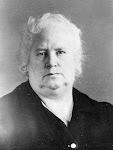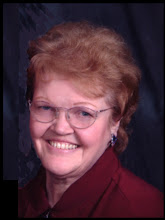HISTORY OF EDWARD STEEL
Written by
Granddaughter - Anna S. Barlow
Submitted to DUP as a pioneer history
I was 15 years old when my Grandpa Edward Steel died, so I remember him well. He had character and personality - plus, but it was all his own – there was just NO ONE quite like grandpa. He was a very efficient carpenter. He was a faithful Latter-day Saint, but he never quite got use to this vast arid country. He used to say he was a thorough-bred Englishman. Me missed his beautiful England, the rain, fog and sunshine, the flowers, shrubs, trees and green grass everywhere, the fertile soil that didn’t have to be irrigated to raise abundant crops, so different from Utah.
He used to say that he would go back to England if he didn’t have to cross that big pond of water again. That was grandpa, he had a dry wit and humor that made him good company in any crowd. He was dearly loved and enjoyed by grandchildren.
Grandpa was born 13 December 1822 at Melton, Mowbray, England. His parents were Thomas and Sarah Waite Steel. I don’t remember him talking much about his boyhood days.
On June 24, 1844 (age 22) he married grandmother, Lucy Charles. She was the lovely daughter of John and Martha Forman Charles. The first child of Edward and Lucy was a daughter, Sarah Jane, then next came my mother, Ada Lucy.
In his youth grandpa had been apprenticed as a carpenter. In those days, after they completed their apprenticeship they really knew most everything about the trade they had learned. He was indeed prepared to go out on his own in the carpenter business. He made a good living for his family and was happy in his work.
The entire routine of their lives was changed one day when Grandma went to visit her older sister, Martha Stevenson and saw two strange books, The Pearl of Great Price and The Doctrine and Covenants laying on the table, She didn’t know that her sister and her family were members of the Mormon Church. But she, herself, had a strong desire to read these books. Through this incident, she and grandpa became converted and were baptized into the Church of Jesus Christ of Latter-day Saints.
They had plans of emigrating to America and Utah in 1860, but grandma’s health was so poor that they decided to wait a little longer.
The following incident shows how efficient grandpa was at his trade. He was working for a firm by the name of ‘Ellis Brothers” and they belonged to either the Methodist or Baptist Church. It seemed the roof of their church needed re-roofing and these Ellis men were contractors and were given the job. However, they didn’t know exactly how to do it. Grandpa, seeing their dilemma, approached them on the subject and said he would take on the job. He even made the boast that he could roof Nottingham Market Place, if they would furnish him the equipment. When the church job was completed so satisfactorily, the Ellis Brothers were so pleased that they paid him handsomely for the job. From this he made enough money to emigrate to Zion.
The family disposed of their belongings in England and prepared to embark on their new adventure April 23, 1862 (age 40 for Edward). The John J. Boyd with 700 saints on board with James S. Brown in charge, was their ship. They were 6 weeks on the ocean. They experienced a very severe storm one night near the banks of Newfoundland, and had a narrow escape from being hit by another ship in the fog. Grandpa saw it and said he could have thrown a potato onto the deck of the other ship it was so close. It would certainly have completely wrecked the John J. Boyd if the collision had occurred.
The land of America, at New York Harbor was a welcome sight to the Steel family. As soon as possible they boarded a train for Florence Nebraska, the outfitting place for the Saints going West. Here they remained 5 weeks making the necessary preparations to cross the plains by ox teams. Homer Duncan was the Captain with Samuel Russell, his assistant, with 50 wagons in the train. They left Florence on July 22 1862. It was extremely hard on grandpa trying to yoke and drive these wild cattle. He had had no previous experience with animals and to get these oxen to go in the right direction with his commands of “Gee” and “Haw” was really a trial to him.
It was September 24, 1862 when the Duncan Company arrived in Salt Lake City. They were pleased to be welcomed by Martha and James Stevenson who had come to Utah in 1855, and were making a home in Springville; also, their friends, the Chamberlains.
The first employment that grandpa had in Salt Lake was on the interior of the Salt Lake Theatre. He had brought his carpenter tools with him, which enabled him to do very skilled labor.
In March of 1863 he moved his family to American Fork and went to work at the mouth of American Fork Canyon at D. R. Allen’s mill. They lived in Pleasant Grove for a while. At this time the Indians were very bad and the families had to stay together at nights for protection.
To get the money to build a home in American Fork, Grandpa got the job of keeping the mail station at Bear River Junction, now called Collingston. Grandma and my mother (Ada Lucy) went with him. They stayed there several moths. (At this time, Ada was home from her first marriage with her son, Edward.)
When the Salt Lake Tabernacle was being built, the folks decided they would move there where the employment was more to grandpa’s liking and ability. In fact, he made all the small sash for the windows in the entire building by hand, fitting them together without the use of nails. His daughter, Ada, my mother, faithfully carried his noon lunch to him each day, which grandma had so lovingly prepared. Their home was just east of where the City and County Building stands today.
When the work on the Tabernacle was finished they moved back to American Fork where he continued to make a living at his building trade and fine carpenter work that was available.
When grandpa and grandma became old and needed extra care, Aunt Sarah Jane Stevenson brought them to Salt Lake City to live close to her. Grandpa was never idle. He obtained small jobs doing cabinet work for homes.
On July 31, 1903, Grandma died. This separation for a time was a great loss and sorrow for him. They had enjoyed a close, sweet companionship for 59 years. Aunt Sarah took good care of him, and we visited him as often as possible. He puttered around at odd jobs when he was able, to occupy his time until our Heavenly Father saw fit to call him to join Grandma. It was January 4, 1907 (age 85) when this happy reunion took place.
(Note from CJC:
Edward and Lucy raised their grandson, Edward, son of Ada Lucy who had married Joseph Wrigley when she was 16. Shortly after the marriage, she became pregnant, and before the child was delivered, she divorced Joseph Wrigley and went home to live with her parents when she was 17. The story in the family is that she promised her parents if she had a son, she would let them raise the boy since they had never had a son. Edward (Sr.) would have been 42 at the time, and his wife would have been 47 or 49. )
Friday, January 14, 2011
Subscribe to:
Post Comments (Atom)
.jpg)
.jpg)


No comments:
Post a Comment
Please comment or add information to be published on this site.